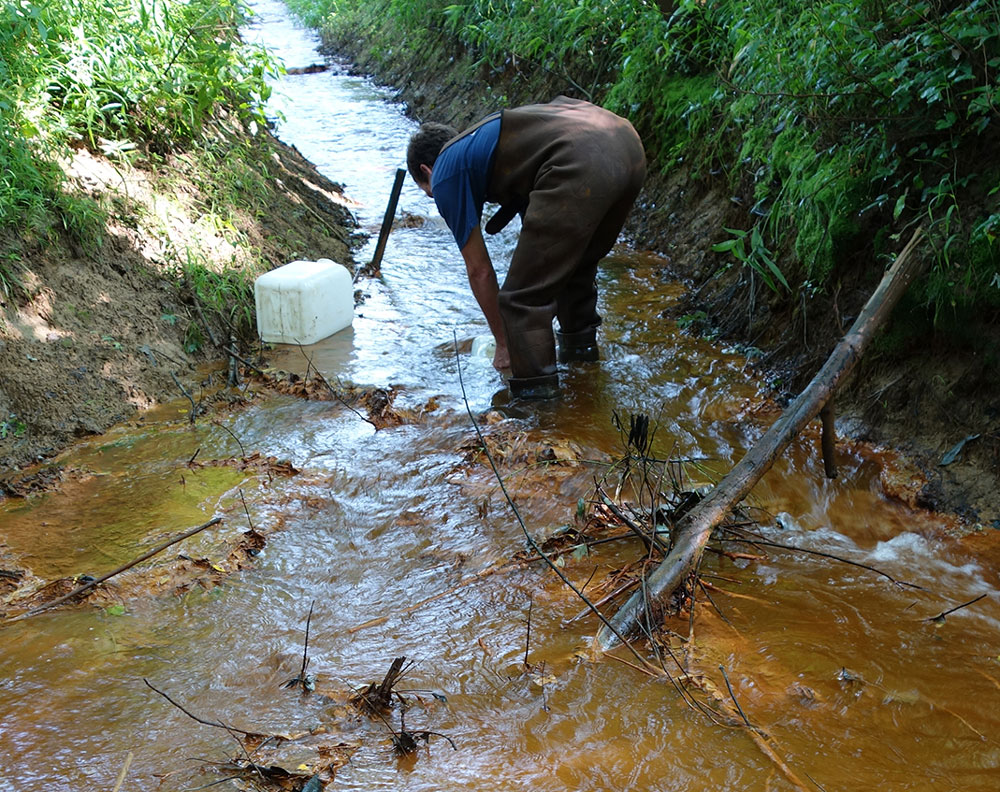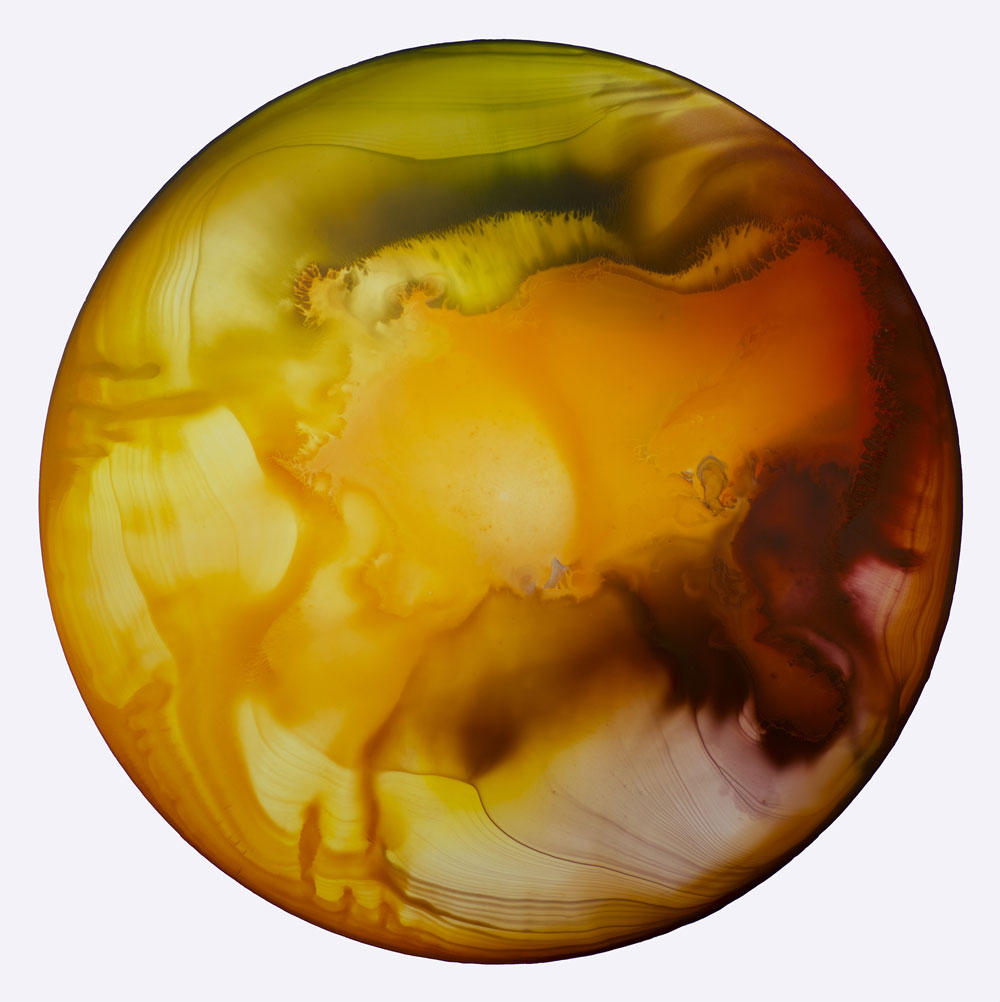
Update: 2020
Since this article was originally published in 2015 much has happened. In an article about John Sabraw in Time.com, August, 2020, writer Arvind Dilwar wrote: “Sabraw’s idea inspired not only a line of his paintings but also a collaborative effort between artists, researchers and community organizers to turn Sunday Creek’s AMD into paint pigments via an artistically inclined water-treatment facility breaking ground next year. Should the project prove to be a success, its backers at Rural Action, a regional nonprofit, are hoping to replicate it throughout Appalachia, turning the runoff from abandoned mines into art, jobs and clean water.”
By Mary Lou Dauray
The transformation of polluted streams into clean running water and safe earth-colored painting pigments from more than 4000 abandoned coal mines in Ohio is possible.
John Sabraw, professor of Art at Ohio University, is an artist and alchemist. He has, along with Dr. Guy Riefler, an associate professor of environmental engineering there, and their students, developed a process which remediates toxic water from abandoned coal mines by filtering out usable iron pigments (oxyhydroxide particles). This is accomplished by neutralizing and aerating the polluted water which settles out the pigments and leaves it clean. This resultant iron sludge is dried, milled into a fine powder and then added to refined linseed oil or acrylic polymer to create paint.
Sabraw uses the colors, which range from a yellow ochre to a rich, dark red in his highly acclaimed painting series such as “Chroma” and Luminous”.
Although this process is still in the development phase, Sabraw and his team are planning to create a pilot facility to clean the water and make the pigment. According to Sabraw, “our latest estimate is that one highly productive abandoned mine drainage seep would produce over 1 ton of dry pigment per day.”
The sale of the pigment would hopefully offset the cost of production. Any profits would go to clean up the huge number of polluted streams in Ohio. Sabraw knows that a production facility could be easily replicated throughout Ohio and in any area of the world. In addition, the local community would be taught to manage the facilities, thus creating jobs.

“The artist, like the scientist, has a crucial role to perform in our society: See things differently, act on this vision, report the failure and successes.” ~ John Sabraw
This is not an isolated project for John Sabraw. All of his paintings, drawings and collaborative installations are produced in an eco conscious manner, and he continually works toward a fully sustainable practice. He has made all of his works net zero carbon emissions. Without a doubt, his eco-art helps to raise awareness of the toxic effect of coal mining pollution.
Sabraw has received a lot of attention from the press, having been most recently featured in Smithsonian, New Scientist, London, and the Discovery Channel. In a recent Huffington Post article, Sabraw mentions that he “collaborates with many scientists and artists in widely differing fields and he has come to the conclusion that scientists and artists share two critical aspects: curiosity and failure…but that failure does not dampen our curiosity. So the artist, like the scientist, has a crucial role to perform in our society: See things differently, act on this vision, report the failure and successes.”
John Sabraw’s art has been shown in more than 80 exhibitions and is in many museum, corporate and private collections including the Museum of Contemporary Art, Honolulu, the Elmhurst Museum in Illinois, Emprise Bank, and Accenture Corp. He is represented in Chicago by Thomas McCormick.
We have not heard the last from John Sabraw, eco-artist and alchemist, and will do a follow up article on his progress and process of turning sludge into paint.
Visit John Sabraw’s website: www.johnsabraw.com
View a video: www.johnsabraw.com/video/
View his art: www.johnsabraw.com/chroma/
PLEASE SHARE

Leave a Reply